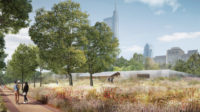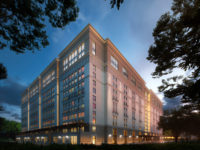Johannesburg Exhibition Takes on the Challenges of Informal Settlements








In the heady days after the end of apartheid, the South African government promised to build millions of new houses. These houses would make “informal settlements”—communities of squatters living in deplorable conditions they are unable to change given their lack of legal ownership— a memory. But the national government has delivered two million fewer houses than promised; meanwhile the population of Gauteng, the province that includes Johannesburg, has increased 30 percent in the last 10 years. Informal settlements have not been eliminated—they’ve grown.
Thorsten Deckler and Anne Graupner, of the Johannesburg firm 26’10 South Architects, together with Alex Opper, who directs the master’s architecture program at the University of Johannesburg, have been focusing attention on one of those settlements, Marlboro South. Despite its genteel sounding name, it is, in their words, “a squatted industrial no-man’s land” and a former apartheid buffer, with an estimated 1,545 households.
As an exhibition on view through May 9 at the city’s Goethe-Institut documents, they enlisted 31 graduate architecture students from Opper’s program to tackle the problems of the informal settlement. Their goal was not just to reimagine the future of Marlboro South, but also to demonstrate a new way for architects to work, which they sometimes describe as “in-situ upgrading”—giving the students a chance to learn, Deckler says, “in a context otherwise completely closed to them.”
The exhibition, called “Informal Studio: Marlboro South,” shows that the goals of the seven-week studio were modest. The students, working with 31 Marlboro South residents (who provided entrée and protection), surveyed the 600-acre site and created a detailed map. Then they began proposing ways to not just to improve living conditions, but also to keep the government from bulldozing the settlement entirely. One strategy involves moving a small number of dwellings, sometimes by building atop other structures, to provide pathways for emergency vehicles. The idea, says Deckler, is to say to the government, “It may be broken, but it can be improved. You don’t have to break it even more.”
But during the studio last year, the Johannesburg Metropolitan Police Department forcibly evicted nearly 1,000 Marlboro South residents. As Opper writes in the newspaper-formatted exhibition catalogue, “the shock the students experienced at realizing how tenuous and highly unpredictable life in an informal settlement can be, meant that many opted for strategies which revolved around immediate (or short-term) responses.” So while there were ambitious plans (Francois Mercer designed a live-work environment for a woman who makes traditional African beer called Umqombothi), there were also proposals like Rick van Heerden’s for turning wooden freight pallets into small dwellings that could be built without foundations.
Half a year after the studio ended, the fate of Marlboro South is very much in question. But as they document in the exhibition, Deckler, Graupner, and Opper managed to help shift the mindset of their students, which they hope presages a larger shift in a profession they say is often “out of step” with how millions of people live.






